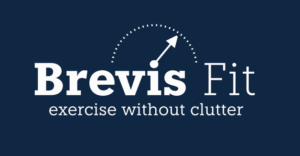Introduction
Changes in body shape - Dry weight and fat-free mass
Measuring body shape changes involves monitoring our dry weight. Dry weight is our body weight without fluids. We are interested in dry weight because this is what Exercise influences the most. Fluid retention can also change, especially through diet [1]. However, these are short-term changes that eventually stabilize. In the end, what we are interested in is the growth of tissues. These are body fat, muscle mass, and bones.
Fat-free mass
While we can measure our dry weight (using specific devices), a simpler way is to measure our fat-free mass. Fat-free mass is our body weight without the non-essential fat. Measuring fat-free mass requires only a regular scale and a tape measure. Assuming constant water retention, a change in fat-free mass denotes a change in muscle and/or bone mass. If our fat-free mass stays the same but our total body weight changes, then our body fat has changed.
Changes in muscle mass and body fat are easy to measure. Changes in bone density on the other side need specific imaging equipment. Luckily, any positive change in muscle mass also influences bone density. For that reason, tracking only muscle mass and body fat is enough [2].
Progress - Gain in muscle mass and bone density
The expected changes from exercise are increased muscle mass and bone density.
For these changes to occur, we need need to stimulate and create demands for change in our muscles and bones. Interestingly, bone density is improved through muscular tension. Therefore, stimulating muscle growth will stimulate the increase in bone density as well.
To stimulate improvements of our muscles, the following is required:
- intense exercise stimulus,
- enough rest and
- adequate nutrition.
Intense contractions stimulate change
With Exercise, we create intense muscular contractions. Intense muscular contraction trigger changes in muscle fibers and bone tissues. These triggers force the body to fulfill new demands for change. Once the need for change has been stimulated, the affected sites start to build the change. This is where sufficient rest and adequate nutrition come into play. With optimal rest and nutrition, our pace of progress is as fast as possible. This means that new muscle tissues and increased bone density are formed at the fastest rate possible. If nutrition and rest are less than optimal, the rate of progress slows down.
No progress - Maintaning or preventing muscle loss
When no progress is noticeable for a longer period, we have stalled. That means that our muscle mass remains the same. This is not necessarily a bad thing, especially when we take into account the effects of aging. Stalling can be separated into two categories:
- either no progress can be expected further, or
- progress has been stalled.
In the first group, we mostly have two explanations:
- we have reached our genetic limit for muscle growth,
- we are preventing the negative effects of aging.
Natural limitations
For these two categories, we can do very little to change the fact. But still, maintaining our peak physical conditioning is essential. Especially when it comes to bone mineral density. Therefore exercise needs to be continued, however, no readjustment of our program is required. And when it comes to aging, maintenance is actually progress. No visible progress in muscle mass can mean that we are keeping the same amount of muscle mass in our 50s, that we had in our 30s. While not gaining new muscle, this is a result that will keep us healthy as we age.
Additionally, no visible progress in muscle mass can still mean progress in bone density as well as strength. Thus, our strength and well-being are very important key performance indicators – KPI (more on exercise-related KPIs, in the first blog post [2]).
In an efficient exercise program, we reach our genetic limit for muscle growth in 2 – 3 years. After that, maintenance of muscle mass and low body fat is the long-term target.
Issues with the Exercise program
But when genetics or aging are not involved, the following explains the lack of progress:
- the intensity level is high enough for maintenance, but not enough for growth,
- we fail to allow enough time for recovery (compensation) and growth (super-compensation).
If maintenance is not what you wish for then we need to adjust these two variables. Either we need to increase the intensity of the effort or allow adequate rest. Many times, lack of progress also results from injuries. These prevent us from maintaining a stable exercise schedule. Therefore we need to lead with good exercise selection and perfect form execution. That will additionally increase our intensity.
Regression - Loosing muscle mass and bone density
In the worst case in regard to our body shape, we lose muscle and bone tissues. This is usually a result of insufficient demands put on our muscles. A great example is astronauts, who deal with muscle loss because of the lack of force put on muscles [4].
Nutrient deficiency
Nutrient deficiency also leads to muscle and bone loss, even though it has been shown that muscle growth is possible in caloric deficits.
Overtraining
Additionally, overtraining can also have an effect, albeit indirectly. Overtraining can lead to injuries or fatigue, which prevents us from doing any exercise. And this could in turn lead to us losing muscle mass and bone density.
Aging-related decline
Finally, Aging is one of the most frequent reasons for loss of muscle mass. While statistics differ, we lose 3% of our muscle mass every decade, after the age of 30. And this number is that much more severe in the following decades [5].
Taking out the case of injuries and extreme fatigue from overtraining, losing muscle is mostly about not putting in the effort. The best thing to do is to simply start Exercising.
Change in body fat - It’s mostly about the diet
The vast majority of body shape changes from Exercise will result in an increase in muscle mass and bone density.
To loose weight, improve your diet
The other side of the change in fat-free mass is body fat itself. These changes are however mostly influenced by our diet. Too many carbohydrates or too many calories can lead to increased body fat reserves. Exercise does help with emptying out glycogen, which allows us to eat more. Still, the effect is not as strong, compared to an improved diet.
Gaining total body weight – Bulking
Gaining body fat and muscle mass at the same time is not considered a bad thing as well. In theory, extra intake of nutrients makes sure that muscle-building resources are plentiful. This optimizes our progress. However, too much body fat gain can diminish the potential gain in muscle mass. This is so because, at a higher body fat percentage, the inclination is to store more of the caloric surplus as our body fat reserves.
Lose body fat and gain muscles
Finally, we can also lose body fat while gaining muscle mass. This happens especially at the start of our Exercise program. Yet, prolonged nutrient deficiency diminishes our ability to form intense muscular contractions. This in turn reduces the quality of the Exercise stimulus. That’s why in most cases of a nutrient deficiency, we only maintain our muscle mass.
Ideally, we would know exactly, how much nutrients we need for best results. However, this is highly unlikely, because of the dynamics of our lives. Therefore it is of practical value to eat to satisfactory levels and reduce body fat separately when needed.
Conclusions
In this blog post, we have continued with our 3 part series about Exercise progress. In this part, we have dived into the first type of progress: changes in body shape.
We have established, that the main marker is the change in our muscle mass. This is most practically measured with fat-free mass.
In that regard, we identified three types of progress: increase, maintenance, or a loss of muscle mass and bone density.
In most cases, the lack of progress is a result of a lack of intensity. This is something we need to keep in check all the time. Still, a regression can sometimes happen when we Exercise to much. With that, we don’t allow our bodies to rest or grow. Still, for the vast majority of cases, lack of progress is associated with lack of intensity.
In order to also reduce body fat, dietary changes are required. It is namely hard to out-exercise a bad diet, and easy to lose weight without any exercise or physical activity. Therefore, for best results, an Exercise program should be accompanied with a good diet.

